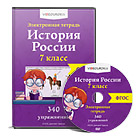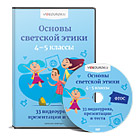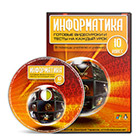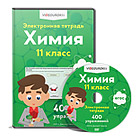The adequacy of translation
as a means of cognition of linguistic and cultural value of words.
Gizatulina O. I., teacher,
Gulistan state University, Uzbekistan
E-mail: [email protected]
Abstract: the article presents the understanding of the essence of translation as a process of interlingual transformation, interpreted in the framework of what can be called a semantic-semantic model.
Key words: semantic-semantic model, translation, equivalents, variant of fable, Aesop fable, national-cultural specificity of society, correspondence.
The object of translation is not a language system as an abstraction, but a specific speech work in another language (the text of the original), on the basis of which another speech work in another language (the text of the translation) is created. The purpose of the translation is to acquaint the reader (or listener), who does not know the language of the original, with this text (or the content of oral speech) as closely as possible. To translate is to Express truly and fully by the means of one language what has already been expressed by the means of another language.
Achieving translation equivalence (adequacy of translation), in spite of differences in formal and semantic system of two languages requires the translator first of all, the ability to produce diverse and high-quality cross-language conversion - the so-called translation transformations so that the translated text with the highest possible completeness of conveyed information that is contained in the source text, in strict compliance with the norms of the target language.
An important element, reflecting the national and cultural specificity of the original, are different kinds of phraseological units — a special type of combinations. Their main feature is "partial or complete inconsistency of the content plan to the plan of expression, which determines the specificity of phraseology" and, of course, will affect the choice of methods and methods of translation.
Literary creativity is interpreted as a special kind of activity, the meaning of which is to display different situations that take into account the actions, feelings, thoughts of people and the world around them. "And it is not by chance that, - rightly points out V. G. GAK, - in the literature of different peoples and different eras, many similar stories, problems, heroes are found" [1 p. 5.]. According to the most conservative estimates, there are at least thirty-three General plots in world literature.
The commonality of plots is determined as a result of borrowings, as well as simply coincidences of similar situations. One and the same deep plot can be developed at parallel development, at borrowing, imitation, alterations, the changes entered into the existing plot. One of the genres in which the national and cultural specificity of society is reflected is the genre of fable. Widely known, for example, prototypical example Aesop fable, transposed in his time Lafontaine in French, and then and I. A. Krylov - on Russian language.
It is about the fable "the Dragonfly and the ant". Over the centuries, a comparative analysis of the Aesopian fable in Greek and Roman culture, and then in the application to European culture revealed various details relevant to the national and cultural specifics of society. In the first versions of the fable, for example, there were not cicadas and not a dragonfly, but a beetle. A similar comparison of these variants is well illustrated by V. G. GAK. When comparing the French and Russian fables, it is noted that they are lengthy, wider than the source. Great informativeness allows to reveal characteristic features for each of comparative cultures. V. G. GAK notes three common differences between Russian and French fables from the prototype-the choice of an animal, attribution of a certain social status to the characters, clarification of their reasoning and relationships. In doing so, he points to the importance of " matching the actions attributed to animals with their actual behavior."
In this regard, it is noteworthy that the famous entomologist J. Fabre even devoted an article to La Fontaine's fable, aimed at identifying the adequacy of the reflection in the fable of the biological aspect, i.e. the way of life of insects, ways of subsistence, natural conditions of their existence.
V. G. GAK further reveals such essential differences of two cultures (Russian and French), as: 1) description of the nature; 2) grammatical gender of the name of the animal; 3) historical and cultural factor, which is reflected in the nature of relations between the characters; 4) economic factor.
The following is essential for understanding this fable. In France, the cold comes with rain, and in Russia-with snow. In French, "dragonfly" and " ant " are feminine words. They personify two women - here coincidence (equality) on a sexual sign, absence of easy discriminative motive. In the Russian text " ant-masculine and personification-as with a touch of humor notes V. G. GAK-it turns out that a greedy and unkind man refuses to help a poor, defenseless, in its own way a pretty woman. This can not but cause a latent negative attitude towards the ant." Russian Russian teacher V. G. GAK additionally informs about quite remarkable studies of Russian teachers, which determine the specifics of the Russian national character. Despite the simplicity and transparency of the fable, the sympathies of Russian schoolchildren are more often on the side of the "bad dragonfly" than on the side of the prudent and economic ant.
In the French text, the relationship between the characters of the fable is more formal and distant, they speak "you". In the Russian version, the characters address each other on "you", and the relationship between them can be called less formal. In addition, when the heroes use the word taken among the loved ones (darling, gossip). Moreover, in "the words of the ant is heard not so much irritation against the petitioner, as the "cheerful cunning of the mind" and mockery, which Pushkin considered a characteristic feature of the folk Krylov characters" [2. Pp. 76].
And finally, the discrepancy between the two versions of the fable is observed in the content of the request of the Cicada and the request of the dragonfly. The" French " Cicada asks for a loan of grain with a promise to repay the debt and interest. And Krylovskaya dragonfly asks for "humanitarian assistance": "all this reflects a great sense of mutual assistance in Russian characters, as well as, perhaps, a less developed level of commodity-money relations in the Russian environment of the time: it is not about a loan, but about gratuitous assistance."
As we can see, several moral attitudes can be deduced from the fable alone, which seem to cause a duality of perception and reflect the contradictions between the morality of the fable and the reader's impression. Russian Russian writer V. G. GAK as a result of his reflections draws a conclusion reflecting the specifics of thinking of the Russian people, the conclusion of the importance of the existence of not only national-cultural, but also universal values: "We said that the Krylovsky ant does not cause much sympathy in the Russian reader. The same applies to the French ant, which readers tend to condemn for unwillingness to help one's neighbor. Both versions of the fable, while condemning indiscretion or idleness, at the same time condemn the lack of mercy."
The study of the types and methods of translation transformations occupies one of the Central places in the translation process. Following V. G. GAK, we understand translation transformation as a departure from the use of isomorphic means available in both languages. Translation transformations can be caused by various factors. The term "transformation" is used in translation studies in a figurative sense. In fact, we are talking about the relationship between the original and final language expressions, the replacement in the process of translation of one form of expression to another, the replacement, which we figuratively call transformation, or transformation.
Thus, the operations described below (translation transformations) are essentially interlingual operations of "re-expression" of meaning. For the sake of convenience of description all kinds of transformations carried out in the process of translation can be reduced to four elementary types: permutation, replacement, addition, omission. However, it should be emphasized that this kind of division is largely approximate and conditional. First, in a number of cases, a transformation can be treated with equal success as one or another type of elementary transformation. Secondly, and most importantly, these four types of elementary translation transformations in practice" in their pure form " are rare - usually, as will be seen from the examples below, they are combined with each other, taking the nature of complex, "complex" transformations.
In accordance with the scheme of V. G. GAK and Yu. I. Lvin, there are three types of equivalence: formal, semantic and situational [2 p. 45]. In formal equivalence, common values in two languages are expressed in similar language forms. In fact, all three categories of equivalence are the result of different translation operations: in the first case, it was the simplest of these operations-substitution, i.e. substitution of signs of the target language instead of signs of the source language, and in the second and third-operations of a more complex type-translation transformations.
If at the sublevel of component equivalence translation is carried out: mainly by grammatical transformations, then at the sublevel of referential equivalence we are talking about more complex lexical and grammatical transformations affecting not only the syntactic matrix, but also its lexical and semantic content. In particular, these transformations are distinguished: transformations based on metonymic shifts, and transformations based on metaphorical shifts. In the first case, the semantic elements of the original and the translation reveal relations based on the adjacency of the concepts they Express, and in the second-based on similarity.
Ya. I. Retsker in his work "theory of translation and translation practice" revealed four main regularities in translation: concretization, antonymic translation, semantic development, compensation. These types of lexical-semantic transformations reflect four main types of different logical relations between concepts. The creation of a complete typology of translation transformations is carried out in two ways: deductive (logical calculus of possible transformations) and inductive (analysis of real translations and generalization of their material).
The initial unit of analysis in the study of types of transformations in translation in the text is the statement-the updated sentence. Four main types of transformations are logically distinguished:
1) transposition of grammatical categories (number, tense, mood, etc.);
2) transposition of parts of speech;
3) lexical-syntactic transpositions (the only purely syntactic transformation is a change in the order of words, all other transformations in the field of syntax are associated with a particular lexical or morphological replacement);
4) lexical and semantic transformations (they also cover the ways of describing the situation, questions of pragmatics).
Among the various schools and areas of linguistic theory of translation should first of all allocate "theory of regular correspondences", first proposed, as is known, ya. I. Retskerom and supported by A.V. Fedorov. The positive value of this theory lies primarily in the fact that instead of vague and often subjectively colored arguments about the adequacy of translation, it first proposed and justified an approach to translation problems based on linguistic principles. Another equally important advantage of this theory is that it is based on a wealth of practical experience of translators. Summarizing the above, it should be noted that the value of the theory of natural correspondences goes far beyond the simple statement of some regular, repetitive relationships between the units of comparable languages. "Natural correspondences" is not an exact name, since it refers both to the types of natural correspondences between the units of two languages (equivalents, variant correspondences), and to the regularities directly related to the translation process. The regularities of the translation process are considered on the basis of the relationship between the individual units of the text (except for the antonymic translation, which provides a combined lexical and syntactic transformation). In some cases, the theory of natural correspondences goes beyond the comparison of individual units and outlines ways to solve complex translation problems.
Speaking about the application of grammatical transformations in translation, it is necessary to clearly distinguish between two cases. In the first, transformation is used as a means of semantic analysis. At the same time, in the final version in the language of translation, the statement does not necessarily remain in the same transformed form, i.e. in the form of nuclear or near-nuclear sentences. Indeed, if we confine ourselves to a comparison of the texts, the original and the final, we can hardly decide whether there has been a grammatical transformation. Nevertheless, there is reason to believe that transformation in this case is an effective means of analysis. In the second case, transformations are used at the synthesis stage. At the same time, for a number of reasons, the translator has to use this or that transformation as a means of constructing the final statement in the language of translation. Transformations are widely used in the process of translation as one of the methods of semantic analysis, and more precisely, in the resolution of polysemy and homonymy.
The stability of phraseological units does not always help to solve the problem of influencing the audience. The author tries to give phraseology another, not quite familiar to the reader or listener, to modify its form. We consider such a violation of the integrity of the phraseological unit as the decomposition of phraseology. Any change in phraseology is justified and purposeful. But we should not assume that the transformation of phraseology is only the result of replacing one component with another. It can also be the result of other types of decomposition of phraseological units, for example, wedging.
The above indicates the need to study the process of decomposition of phraseological units in the theory of translation. Without knowledge and deep understanding of this process in both languages, the translator will increasingly face the fact of untranslatability. Moreover, mistakes are possible. Thus, the decomposition of phraseological units poses to the translator a number of problems that can be solved by comparative study of languages in the field of speech functioning.
This paper presents the understanding of the essence of translation as a process of interlingual transformation, interpreted in the framework of what can be called a semantic-semantic model. Since the text is a sequence of linguistic, in other words, sign units, the semantic content (meaning) of these units and the text as a whole can and should be disclosed by establishing links between these units themselves and something lying outside them, i.e. the relations of sign units to each other. Therefore, the task of the translator is to understand the meaning of the source text and Express the same meaning (more precisely, the system of values) by means of another language. At the same time, there is an interlanguage transformation, i.e. the replacement of one sign system by another, which leads to inevitable semantic losses. The translator should reduce them to a minimum, i.e. to provide a greater degree of equivalence of the source text and the translation text, which is impossible without a variety of translation transformations.
Literature
1. GAK V. G., Lvin Yu. I. translation Course: French. Moscow, 2000.
2. GAK V. G. Comparative lexicology: on the material of French and Russian languages. Moscow, 2017.
3. Kazakova T. A. Practical bases of translation. Moscow: Soyuz, 2000.
4. Racer Y. I. Theory of translation and translation practice. Essays on the linguistic theory of translation. Moscow, 1974.

 Получите свидетельство
Получите свидетельство Вход
Вход












 The adequacy of translation as a means of cognition of linguistic and cultural value of words. (19.28 KB)
The adequacy of translation as a means of cognition of linguistic and cultural value of words. (19.28 KB)
 0
0 33
33 0
0 Нравится
0
Нравится
0


